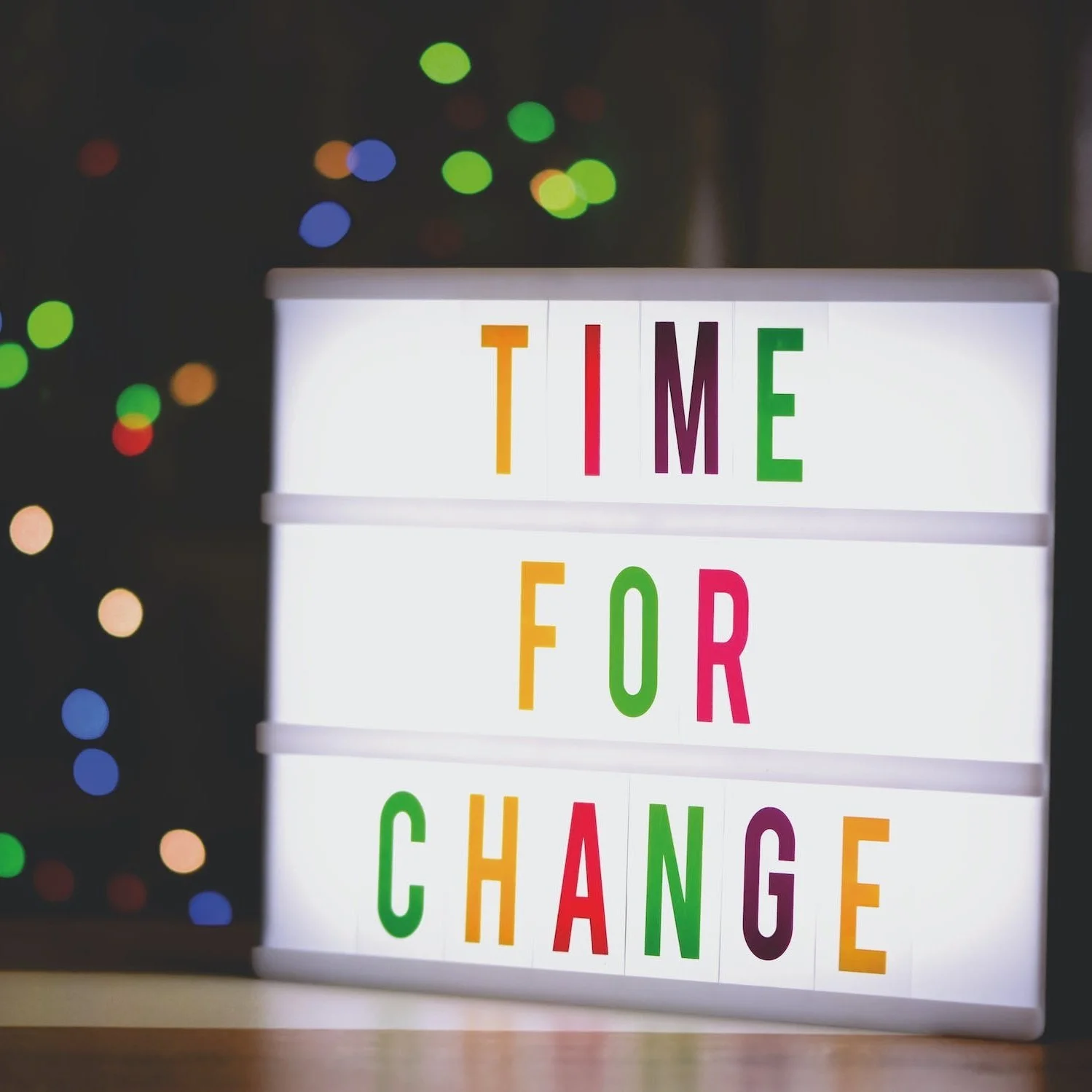How to Change Your Habits and Make it Stick - Part 1
Our lives are run by habit. We wouldn’t be able to do the majority of the things we do in the day without habits. This doesn’t make habits wrong, right, good, bad, healthy, unhealthy… Habits simply are. Habits by nature are subconscious and exist solely to respond to different stimuli (pop over and read How Habits Affect Your Life if you want to understand why habits better).
Where habits become difficult is when we try to change them and rewrite the response to specific stimuli. Occasionally, this is simple and we do it without realizing we’re even doing it. Usually the “reward” part of the ‘Cue, Routine, Reward’ is strong enough to make the change so pleasurable that the habit is quickly built. We as humans run into trouble when we’re trying to change a habit with a strong reward to something that’s a less pleasurable or weaker reward. The desire for the stronger, more pleasurable reward will win out more frequently making it more difficult to change the habit. This doesn’t mean that it’s impossible to change these habits! Quite the opposite! Changing how we approach change will change how easy it is to make the change.
Understanding Who You Are
First step in change is understanding who you are at your core. Consider who you believe yourself to be. What stories are you telling yourself about yourself? What do you gain from these stories and how do you suffer as a result of these stories?
Next, consider who you want to be. What stories would that person tell you about themselves? What does that person gain from these stories being true?
The stories might be about how you react in situations or about things you choose to do each day. These stories are stories about your habits.
Once you know who you want to be, you can start to make changes.
Make it Obvious or Make it Invisible
This is the first law of changing a Habit from Atomic Habits by James Clear. If you make what you want to do obvious, you’re more likely to do it. If you make it invisible, you’re more likely to forget about it.
Make it Obvious
Use this to help you build the new habits you want to include in your life.
This might be starting to take a supplement, remembering to take your medication, going for a walk or run each day, starting a meditation practice, eating certain foods, etc.
Choose something that will help you make it Obvious. This might be as simple as putting the supplement and a glass of water on your nightstand before bed or setting them beside the coffee maker in the morning. Putting the supplement or medication where you’ll see it drastically increases your odds of actually taking it. If it needs to be refrigerated, use a brightly coloured post-it note in place of the bottle and do it when you see the post-it note.
For the walk or run (or any other physical activity), this might be a matter of putting your shoes somewhere where you won’t miss them, putting clothing out that’s comfortable for the activity you’re choosing, etc.
For starting a meditation practice, this might look like setting a daily alarm on your phone to let you know that it’s a specific time and you stop what you’re doing and take three minutes to meditate. It might look like creating a space at home or at work where you go to meditate. If you’re creating a space, make it somewhere you see regularly. If it’s tucked away in a room you don’t typically use, it’s not obvious.
For eating certain foods (ie: more fruit, vegetables, protein, etc), take some time to prep the food ahead for the week and put it at eye height in the fridge (if it needs to be refrigerated) or on the counter (if it doesn’t need to be refrigerated). Put it somewhere you’ll see it daily.
Any and all of these can also be made obvious by setting a daily alarm to remind you. Choose a way to make it really obvious to yourself that you’re going to take the action you decided to take.
Make it Invisible
This is the exact opposite of ‘Make it Obvious’. If there’s something you no longer want to do, Make it Invisible. Hide anything associated with the habit. Eliminate everything associated with the habit from your house if you can.
If you’re trying to quit smoking, remove all cigarettes from the house. Hide or throw away the ashtrays or have someone in your house hide them for you if you’ll remember where you put them. Eliminate anything and everything directly related to smoking. For something like smoking, it’s best to get everything out of the house (especially things like ashtrays).
This is a little harder for things like food you want to stop eating. The key here is to not deprive yourself of the particular food item but learn to make it an experience rather than simply eating out of the container mindlessly.
Next Steps
Choose just one thing you want to change. Ideally, start with something small. Often, it’s easier to change a small habit which creates the win that helps to create momentum to change bigger habits.
If you find yourself falling back into old habits, check back in with who you want to be? What would that person choose?
Finally, is there a way to make the thing you want to change more obvious or more invisible?
If you’re looking for a little extra accountability, add a comment below and let me know what you’re working on changing.
Andrea
PS - Stress is often the stimuli for our habits (hint: especially the ones that we’re most likely looking to change). Take a moment to read Stress and Hypnosis by Rebecca to better understand the stress response and what it’s doing in the body.




